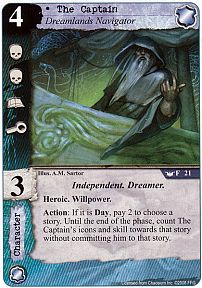The
Mariner
by
Scott Bennie
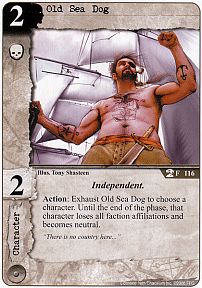
The
Mariner
by
Scott Bennie

| Armor and weapons | Parrying & disarming | Mariner skills | - | - |
| 1. Swimming | 2. Diving | 3. Hold Breath | 4. Navigation | 5. Piloting |
| 6. Climb ropes/ladders | 7. Predict weather | 8. Sea lore | 9. Shipwright and ship evaluation | 10. Languages |
| 11. Command skills | 12. Undersea combat | 13. Find hidden/secret doors | Special options | - |
| Dragon | - | Classes | - | Dragon 107 |
For sail: One new NPC
Welcome to the mariner aboard in your
game
by Scott Bennie
The mariner is a non-player character for
the AD&D® game, a
fighter sub-class that specializes in
the skills and weapons mastery
appropriate to seafarers. Mariners may
be of any alignment; two
well-known sub-variants of the mariner
are the neutral buccaneers
and evil pirates, who are identical to
mariners in every respect.
They use the attack and saving-throw tables
of fighters, and they
have no innate spell-casting abilities.
Starting ages, initial funds,
restrictions on material and magical ownership,
and the like are as
per the fighter class.
To become a mariner, a NPC must have a
strength
of not less than 12, an intelligence of
12 or greater, a dexterity of 13
or greater, and a constitution of not
less than 10. They do not gain
bonuses for earned experience. Mariners
may be humans (with
unlimited level advancement), elves (either
grey or high), half-elves
(with one parent either grey or high),
or half-arcs. Elves may be
multiclassed as mariner/magic-users, mariner/clerics,
mariner/
thieves, or mariner/thief/magic-users.
Half-elves may be multiclassed
as mariner/clerics, mariner/magic-users,
mariner/thieves, or
mariner/cleric/thieves. Half-arcs may
become mariner/assassins,
mariner/clerics, or mariner/thieves. Level
limits are as per the
fighter class in Unearthed Arcana in the
case of nonhumans, except
that a dexterity of 17 is required to
exceed 10th level, and a dexterity
of 18 is required to exceed 12th level.
At the DM?s option, a half-elf mariner
or mariner/thief may be
declared to have had an aquatic elf parent.
Such a character cannot
cast magic and is limited to the 6th level
of advancement as a mariner,
but he or she can breathe water automatically
by means of gills
on his or her neck. The character may
also communicate with dolphins,
taking the dolphin?s tongue as a language
(as well as the sea
elves? tongue).
MARINERS EXPERIENCE TABLE
| Experience points | Exp. level | 8-sided dice for accum. hit points | Level title |
| 0 - 2,250 | 1 | 1 | Sailor |
| 2,251 - 4,500 | 2 | 2 | Ship's mate |
| 4,501 - 9,000 | 3 | 3 | Sea dog |
| 9,001 - 20,000 | 4 | 4 | Seaman |
| 20,001 - 40,000 | 5 | 5 | Seafarer |
| 40,001 - 75,000 | 6 | 6 | Sea rover |
| 75,001 - 150,00 | 7 | 7 | Sea hawk |
| 150,001 - 300,000 | 8 | 8 | Ship master |
| 300,001 - 575,000 | 9 | 9 | Mariner |
| 575,001 - 850,000 | 10 | 10 | Mariner |
| 850,001 - 1,125,000 | 11 | 11 | Mariner |
275,000 experience points are required
to achieve each additional
level above the 11th. Mariners gain 3
hp per level after the 9th level.
Alternate level titles may be substituted
for mariners who are
buccaneers or pirates, such as Corsair
and Privateer. Certain titles
such as first mate, navigator, lieutenant,
and captain should be
reserved for the positions typical of
any ship.
Armor and weapons
Mariners normally wear only leather armor,
because shipboard
work is too strenuous for bulkier dress.
Before battle, magical chain
mail, ring mail, or studded leather may
be donned, but such armor
will be taken off again as soon as the
fighting is done. Mariners
value movement and low encumbrance highly.
Due to their training and agility in combat,
mariners gain a +2
bonus on their armor class while wearing
leather or no armor at all
(so that AC 8 becomes AC 6). This armor
bonus is cumulative with
the wearing of magical rings, bracers,
and other items that alter
armor class. Mariners will use only small-sized
shields (the sort that
can be used to defend against one opponent
at a time), and may use
spiked bucklers.
Mariner NPCs begin at 1st level with proficiency
in three weapons.
They gain a new weapon for every three
experience levels they
rise (i.e., a new weapon at 4th, 7th,
10th, etc., level) and wield
weapons with which they are not proficient
at a -2 ?to hit? penalty.
Mariners gain new attacks per round as
a fighter does; they may
also use oil or poison (if the DM permits),
but will rarely do so.
Because shipboard fighting takes place
in close quarters and striking
speed is so important, mariners only use
certain hand-to-hand
weapons and no others: hand axes, clubs,
daggers, hammers,
knives, saps, scimitars, quarterstaves,
and one-handed swords
(broad, long, and short). These weapons
are also very effective
against lightly armored opponents. Short
spears and tridents will be
used in initial boarding actions and may
be taken with proficiency,
though these weapons are usually discarded
in close combat. Being
skilled at close-quarters fighting (including
?pier six brawls?) gives
mariners a +1 bonus to hit when using
their fists, using either
Method II for unarmed combat (Unearthed
Arcana, pp. 106-107, or
the variant combat system in Best of
DRAGON® Magazine, Volume
4, pp. 42-44).
Mariners use various missile weapons that
adapt well to seafighting.
Javelins and harpoons are favored for
their range and power,
and spears are often cast between ships
as well. Mariners may also
be proficient at heavy weapons such as
ballistae and catapults, and
mariners who dive underwater may chose
to be proficient with the
underwater
net (see the Dungeon Masters Guide, p. 56). Note that
the fitting of a catapult aboard a ship
is a tricky thing, as the shot
may fly through the ship?s own rigging
and sails.
Light and heavy crossbows are commonly
used, since these weapons
have great range and penetrating power
against lightly armored
opponents. Longbows and short bows require
greater care than
crossbows and are more easily damaged
by seawater, and thus are
usually not learned. Mariners can use
crossbows with great accuracy,
gaining a +1 ?to hit? bonus when using
them. This results
from using them so often on normally unsteady
ships and from
practiced aiming at individual targets.
Crossbows may not be reloaded
by mariners in a ship?s rigging; solid
footing is required to
recrank the weapon.
Parrying &
disarming
Sea combat is not always to the death;
it is often preferable to
capture opponents, as experienced sailors
are hard to come by.
Thus, mariners often try to win fights
by killing as few sailors as
possible. Defensive parrying and disarming
strikes are frequently
used as a result, as is subdual
(Unearthed Arcana, p. 106). <106=x>
Mariners can effectively parry attacks
when using scimitars,
swords, clubs, or staves. Parrying involves
subtracting a mariner?s
total ?to hit? bonus (including strength
and magical adjustments)
from the ?to hit? roll of an attacking
opponent. The mariner may
elect to parry one attack directed against
him for every attack per
round that the mariner normally gets,
but cannot both parry and
attack in the same round unless he successfully
disarms his opponent
(see below). A mariner must state, before
the attack against him is
rolled, whether he intends to parry that
attack. A blow cannot be
parried more than once, and a parry cannot
be redirected as an
offensive attack once it is declared.
Only weapon attacks made from man-sized
or smaller opponents
can be parried; claw attacks and blows
from giants, demons,
dragons, undead, purple worms, etc., cannot
be turned aside. Although
a mariner cannot parry when surprised,
he can parry an
opponent who has won initiative against
him.
Mariners use the disarming
rules as noted in Unearthed Arcana,
p. 106, but have a special ability available
to them. If a mariner <106=x>
successfully disarms an opponent, the
mariner may strike at the
opponent again, either to kill or subdue,
as an extra attack above
and beyond all others alloted that round.
Optionally, if using a
sharp-edged weapon, the mariner may place
the weapon against a
vital spot on the opponent and demand
the victim?s surrender. If the
victim refuses, the mariner gains automatic
initiative to strike, and
gains a +3 bonus to hit and damage the
opponent. This attack will
finish out the attacks for the mariner
in that round.
Mariner skills
Shipboard life and familiarity with the
sea gives the mariner NPC
a wide variety of special talents. These
skills are listed below and
described individually.
MARINER SKILLS TABLE
| Level of Mariner | Navigation/Piloting | Predict Weather/Sea Lore | Climb Ropes/Ladders |
| 1 | 65% | 40% | 80% |
| 2 | 68% | 45% | 82% |
| 3 | 71% | 50% | 84% |
| 4 | 74% | 55% | 86% |
| 5 | 77% | 60% | 88% |
| 6 | 80% | 65% | 90% |
| 7 | 83% | 70% | 92% |
| 8 | 86% | 75% | 94% |
| 9 | 89% | 80% | 96% |
| 10 | 92% | 85% | 98% |
| 11 | 95% | 90% | 99% |
| 12 | 98% | 93% | 99.2% |
| 13 | 101% | 96% | 99.4% |
| 14 | 104% | 97% | 99.6% |
| 15 | 107% | 98% | 99.7% |
| 16+ | 110% | 99% | 99.8% |
Note: When using the tables in the DMG,
ignore the references to
fires. Otherwise, as far as hull damage
and repair time are concerned,
they are applicable.
1. Swimming: It
can be assumed by the DM that any character
who has lived by a body of water can swim.
Mariners are excellent
swimmers capable of swimming faster and
surviving longer in the
water than any other character class.
Specific rules on swimming,
drowning, and hypothermia follow.
Movement: According to the DMG
(p. 56), the base swimming
rate
is equal to dungeon movement rate (i.e., one-third normal
wilderness movement rate). This produces
the following rates:
Move Distance traveled in:
rate 1 round 1 segment
6? 60? 6?
9? 90? 9?
12" 120? 12?
1 5 ? 150? 15?
Distance travelled in
| Move Rate | 1 round | 1 segment |
| 6" | 60' | 6' |
| 9" | 90' | 9' |
| 12" | 120' | |
| 15" | 150' |
Mariners swim at a 15" movement base. Wearing
non-magical
leather armor and every 50 gp of encumbrance
(100 gp for mariners)
reduces a character?s swimming movement
by 3?. At 0?, the swimmer
cannot maintain his buoyancy and will
be forced to walk on the
bottom of the body of water (provided
he can breathe, of course).
Magical ring mail, studded leather, and
chain mail are the equivalent
of non-magical leather, if waterproofing
was part of the
dweomer cast upon such armors. Magical
leather armor counts as
no armor at all.
Because water density restricts movement,
?retreat? movement is
only twice the base swimming rate. All
movement submerged is half
the surface rate.
Drowning:
When a person swims in water for an extended length
of time, there is a chance that the swimmer
will not be able to maintain
his buoyancy; then he will drown. Consult
the chart below,
doubling the amount of encumbrance for
mariners and treating
magical ring mail, chain mail, and studded
leather armor as nonmagical
leather, to determine at what interval
a drowning check
must be made. Magical leather is equal
to no armor at all.
No armor or encumbrance
? 2 hours
Leather armor (non-magical)
? 1 hour
At least 50 gp enc.?
1 hour
Leather and 50 gp enc.
? ½ hour
At least 100 gp enc.?
½ hour
Leather and 100 gp
enc. ? 1 turn
At least 150 gp enc.
? 1 turn
Leather and 150 + gp
enc. ? 5 rounds
At least 200 gp enc.
? 5 rounds
The base chance for drowning is 25%, modified
as follows:
Salt water: -10%
Calm water and/or weak
current: -20%
Choppy water or moderate
current: -0%
Rough water or strong
current: +15%
Storm (check every
turn): +50%
Treading water (0"
movement): -15%
Every previous drowning
check made: +10%
Every level of mariner
or sea-deity cleric: -3 %/level
Every level of sea-deity
worshiper: -1 %/level
Buoying device: -5%
to -50%
Note that if a drowning check is called
for twice (e.g., if the swimmer
is wearing leather and has 100 gp encumbrance
during a
storm), the character must make two drowning
rolls, and the +10%
factor for previous checks made applies
from the first roll to the
second roll.
Hypothermia: Hypothermia from exposure
to cold waters can
cause drowning. A ring of warmth or similar
magic item or spell will
prevent hypothermia; otherwise, a drowning
check must be made
every turn that the water temperature
is below 50°F, or every two
rounds if the temperature is below 40°F.
The addition to the drowning
roll is as follows:
Water temperature below
60°F: + 10%
Water temperature below
50°F: + 30%
Water temperature below
40°F: + 60%
2. Diving:
Although water can cushion a fall, a person jumping
into it from a great height is going to
be hurt. Mariners are accomplished
divers, however.
Diving into water in heavy armor carries
dire consequences. If a
person leaps into the water in any armor
except leather, he will take
half the damage that he would have sustained
had he fallen on solid
ground, and is likely to sink as fast,
if not faster than, an anchor.
In order to successfully dive, the water
must be deep enough to
recover from the fall. For a dive of 30?
or less, the minimum depth
is 4? (5? for non-mariners). For a dive
of between 30? and 90?, the
minimum depth is 8? (10? for non-mariners),
and for a dive above
90?, the minimum depth is 12? (15? for
non-mariners). If the water
is too shallow, the diver will sustain
half the damage he would have
suffered had he struck hard ground, minus
a number of hit points
equal to twice the depth of the water
in feet subtracted from the
height of the fall in feet (as the water
decreases the diver?s velocity
and absorbs some of the kinetic energy).
Even without minimum depths, falling into
the water can hurt,
although not as badly as falling onto
solid ground. A diver is able to
jump from as high as 50' without taking
damage; every 10' above
the maximum height will cause the diver
to sustain 1d6 damage
(75% of which is counted as incidental
damage, as per the Dungeon Masters Guide, p. 72).
If the diver is encumbered, the minimum
safe height increases; wearing leather
armor (and every 100 gp
amount of encumbrance) reduces the safety
height by 10? increments
to a minimum safe diving elevation of
20?. Mariners have an
increase in their safe diving elevation
of 10? per level, to a maximum
of bonus of 150? at 11th level.
3. Holding
breath: A character is normally
able to hold his
breath for only one round, emerging from
the water to regain his
breath at this time. Mariners are exceptionally
good at this skill and
are able to hold their breath for two
rounds, plus one round per four
points of constitution (four rounds at
constitution 10- 11, five rounds
at constitution 12-15, and six rounds
at constitution 16 and above).
A character forced past his limit takes
ld6 hit points damage, cumulative,
per round (ld6 on the 1st round, 3d6 on
the 2nd round, 6d6
on the 3rd round, etc.) of which 75% is
incidental
damage (DMG,
p. 72), as will a character who exceeds
his depth limit (75? for nonmariners,
125? for mariners).
4. Navigation:
Navigation is the science of directing ships over
large bodies of water. In medieval times,
the technology of navigation
was very primitive (the compass was not
employed aboard ship
until after 1300 A.D.); while Prince Henry
the Navigator advanced
the training of navigators, technological
developments in navigation
were insignificant until well after the
medieval period. In an AD&D
universe, magic usually replaces technology,
and ships might carry
magical instruments that perform the same
function as an astrolabe
or sextant. These devices would be among
the most valuable treasures
aboard a ship.
A navigator?s chief function, of course,
is to plot the ship?s course.
To determine the accuracy of a course,
plot the route between the
point of departure and destination, checking
for errors daily by
rolling percentile dice. Subtract the
mariner?s navigation roll from
the score. If the total is greater than
zero, then that is the percentage
that the course is in error. For example:
A ship has a course plotted
that will allow it to sail sixty miles
in a day The navigator make a
10% error. The ship is 10% of 60 miles
off course, or 6 miles. There
is a 50% chance that the direction of
error is portside and 50%
chance that it is starboard; the DM may
wish to adjust the direction
of the error, given phenomena such as
strong winds or current.
Only one roll may be made for a vessel
each day, using the highest
navigation roll of any mariners aboard.
The navigation roll is subject
to the following modifiers.
Two or more navigators in consort: +15%*
Ship sailing against moderate current:
-5%
Strong breeze: -10%
Ship is old or worn (unseaworthy): -10%
Ship sailing against strong current: -15%
Strong gale: -25%
Storm or greater force winds: -50%
The following technological modifiers are
also used:
Primitive technology:
Out of sight of landmarks: -30%
Rudimentary technology (compass, cross-staff,
astrolabe):
Light cloud cover: -10%
Heavy cloud cover: -25%
Advanced technology (post-astrolabe):
Light cloud cover: -5%
Heavy cloud cover: -10%
* ? See note below on two navigators in
consort.
A character with a secondary
skill of navigator (as per the DMG,
p. 12) has a base navigation/piloting
score of 40%) and a base sea
lore score of 10%. These benefits come
from training prior to attaining
1st level.
A character may increase his navigation/piloting
and sea lore
scores if he takes a 5% experience-point
penalty and takes an extra
week of training between levels. The extra
training costs 100 gp/
level, so a 5th-level mariner training
for 6th level would pay 600 gp.
The 5% penalty on experience means that
the character must drop
5% of all experience earned, slowing his
level advancement rate. The
navigation/piloting score will then advance
by 2% per level (to a
maximum score of 70%), and the sea lore
score increases by 4% per
level to a maximum of 50%. If a character
has a 50% score in
navigation/piloting, he may work with
another navigator with a
similarly high score in consort, improving
their mutual chances of
success.
5. Piloting:
Piloting is the science of directing a ship through a
hazardous area (e.g., an icefield, lake
with jutting rocks at irregular
intervals, a reef, or a strong current
which pulls ships into danger).
When the possibility of such disaster
occurs, the mariner must make
his piloting roll, which is identical
to the navigation roll. The roll is
subject to the following modifiers:
Two or more pilots
in consort: +15%*
Lighthouse in area:
+25%
Ship is unseaworthy:
-10%
Strong breeze: -10%
Ship sailing against
strong current: -15%
Light fog: -15%
Strong gale: -25%
Heavy fog (¼
mile visibility): -30%
Storm or greater force
winds: -50%
* ? See note above on two navigators in
consort, under #4.
The roll should be made for every 5 miles
of hazard. If, for example,
a ship is threatened by a passage 15 miles
long that contains
jagged boulders, the piloting roll must
be made three times. The
DM must determine the degree of hazard
beforehand; if the ship
misses the piloting roll, it takes damage
according to the severity of
the hazard and the amount by which the
piloting roll was missed
(refer to the table in the DMG,
p. 54):
Minor Hazard
| Missed by | Damage |
| 01-20% | Light |
| 21-35% | Light to moderate |
| 36-00% | Moderate |
Major Hazard
| Missed by | Damage |
| 01-10% | Light |
| 11-20% | Light to moderate |
| 21-35% | Moderate |
| 36-00% | Moderate to heavy |
Critical Hazard
| Missed by | Damage |
| 01-10% | Light to moderate |
| 11-20% | Moderate |
| 31-35% | Moderate to heavy |
| 36-00% | Heavy |
6. Climb
ropes/ladders: The movement rate
of normal ladder
climbing is 4?; the normal movement for
rope climbing is 2?. With
a successful climb ropes/ladders roll,
a mariner can double his movement
rate. If the roll is unsuccessful, the
mariner falls. Slickness of
the rope, etc., are important factors
that modify the roll. Climbing a
ship?s rigging is the same as climbing
a ladder, as far as mariners are
c o n c e r n e d .
The climb ropes/ladders roll is also used
if the mariner is climbing
under extreme stress, such as in heavy
seas and storms, in boarding
actions in combat or when the ship is
rammed, when a large wave or
high winds strike the ship, and so forth.
Mariners do not normally
roll to climb either ropes or ladders
aboardship, though non-mariners
have a 20% chance of falling or stumbling
until they get
their "sea legs" (in 2-5 days).
7. Predict weather:
Using this skill, a mariner has a percentage
chance to predict the weather in the immediate
area (within a 5-mile
radius of his position) within the next
eight hours. This skill is usable
only on the sea or in shore-lying areas.
8. Sea lore: This
skill is similar to a bard?s legend lore, but
deals with knowledge of nautical legends,
such as recognizing the
names of sunken ships and remembering
their history, recognizing
uncharted islands from rumors and reports
of landmarks, identifying
sea monsters and ghost ships, knowing
how to tie 101 different
knots, etc.
9. Shipwright and ship
evaluation: A mariner knows the arts of
ship construction and can determine its
quality with minimal inspection.
Ships have four quality classifications:
Unseaworthy: This is the most decrepit
ship type. If you notice
rats scurrying in droves down the ship?s
gangplank prior to departure,
it?s probably unseaworthy. In high winds,
unseaworthy ships
take hull damage in addition to the usual
chances for a catastrophe:
1-2 points of hull damage in a strong
gale, 1-3 points in a storm, and
1-6 points in a hurricane. Unseaworthy
ships are capable of only
75% normal speed, and cost -10% to -30%
of the normal ship
price.
Average: The normal quality of seagoing
ships. They also take
damage in addition to the usual broken
masts, etc., taking 1 hull
point per hour in a storm, and 1-2 in
a hurricane. They have approximately
normal speed, costs, and capsizing chances.
Good: These ships are built with time and
care. Good quality
ships often serve as the flagship of a
small nation?s fleet or command
vessels of a larger nation?s fleet. They
take 1 hull point damage per
hour in a hurricane, and have -10% to
their capsize and wind
damage results percentages (see DMG, p.
54). These ships cost
twice normal price and will only rarely
be available for sale.
Excellent: The best ships are of excellent
quality, designed by
experts and built by masters. An excellent
vessel serves as the flagship
of a large seafaring nation?s navy, and
as such are never available
for sale, although they make a great prize
in a naval battle. They
have only a 5% chance to capsize in a
storm (a 15% chance in a
hurricane) and take -30% to their wind
damage percentage. They
move through the water at +10% speed.
To calculate the hull points of major ship
types in their assorted
conditions, consult the following chart:
| Ship | Unseaworthy | Average | Good | Excellent |
| Galley, small | 1d4+2 | 1d6+4 | 2d4+4 | 1d6+6 |
| Galley, large | 1d6+2 | 1d8+4 | 2d6+4 | 3d4+4 |
| Merchant, small | 2d6+6 | 2d8+8 | 3d8+12 | 4d6+12 |
| Merchant, large | 3d6+9 | 3d8+12 | 4d8+12 | 6d6+12 |
| Warship | 3d6+4 | 3d8+6 | 4d8+6 | 5d6+12 |
A mariner is also trained in the art of
ship construction and design.
A 3rd-level mariner is able to design
and oversee the construction
of a seaworthy (i.e., average) vessel;
a 10th-level mariner can
construct (with an experienced building
team) a good quality ship;
and a 11th-level mariner (with master
craftsmen) can produce a
vessel of excellent quality. It is up
to the DM to determine the construction
time and costs in accordance to manpower
available and
the monetary system of the campaign.
10. Languages:
A mariner automatically knows the common
tongue, but instead of an alignment language
(which may be learned
later), a mariner knows a strange dialect
called ?the sea tongue,? a
language used in ceremonies by religions
devoted to the worship of
sea deities, and known to the leaders
of sea peoples such as aquatic
elves, triton, koalinth, mermen, etc.
A mariner receives a great
amount of language training and may pick
up a new language (provided
it is of a marine human or demi-human)
at 3rd level and every
three levels afterward (6th, 9th, etc.)
until he reaches his maximum
language total.
A mariner can also learn as many signaling
codes as he can learn
languages. A mariner automatically knows
a ?common? flag code
and a ?common? conch-horn code, and may
pick up new codes at
3rd level and at every three levels afterward,
or at a rate of six
months training, minus one month for every
point of intelligence
over 12 to a minimum of one month.
11. Command skills:
A mariner knows how to handle a ship in a
sea battle with great effectiveness. At
10th level, a mariner can also
rouse his crew so they fight at +10% morale
and +1 to all ?to hit?
rolls. Such a rouse requires three uninterrupted
turns, and the entire
crew must be gathered to listen. A mariner
is also aware of the function
of each man aboard ship and may substitute
for any position if
required.
12. Undersea combat:
Although subject to the same weapon
restrictions of any land-dweller when
fighting underwater, a mariner
is skilled beyond any other human in undersea
combat. At 3rd level,
a mariner has +2 to his initiative roll
when battling a land-dweller
underwater; at 7th level, a mariner actually
has a chance to tie initiative
against an undersea denizen if he exceeds
its initiative roll by
three (i.e., 4-1, 5-2, 5-1, 6-3, 6-2,
6-1), and he wins if he exceeds its
roll by four or more (i.e., 5-1, 6-2,
6-1).
13. Find secret/hidden
doors on ship: A mariner has the
same
percentage to find secret doors as a thief
does. This does not translate
to a knowledge of how to locate secret
passages in buildings on
land.
Special options
Proficiency skills: The mariner,
before attaining first. level, has the
option of dropping one proficient weapon
and concentrating on
marine skills. If the mariner choses the
proficiency skills option, he
will have one level greater ability in
sea lore, predict weather, shipwright,
and language attainment, and two levels
greater ability in
swimming, diving, navigation, piloting,
and climb ropes/ladders.
Mariner?s armor: This special leather
armor is constructed by the
most skilled tanners and armorers. It
is not magical, but acts as if it?
were for swimming and diving purposes
(equal to no armor). It is
waterproof, as is normal leather. Cost
varies according to region and
economic conditions, but it is at least
four times the cost of ordinary
leather armor (usually 20 gp). It must
be tailored to fit the individual
and requires 30 days to prepare.
Henchmen and hirelings: Mariners
may hire any class of character
and take on any henchmen, as per fighters.
They do not construct
freeholds as do fighters, though any mariner
of 5th level and
above who owns a ship may serve as that
ship's captain; he will
attract a body of 2-20 0-level sailors
and 1-4 mariners of levels 1-4.
Other crewmen must be hired or found individually.
Mariners of 1st level may serve as mates
(or sergeants), as per the
DMG, pp. 33-34.
Mariners of 2nd to 4th level may serve as lieutenants,
and those of 5th level and up may be captains.
Mariners who
are ship captains may be hired to lead
expeditions for trade, military,
exploration, or private purposes. Adventures
may encounter
them frequently in coastal areas. Fleet
commanders are almost always
9th level and above.
Acknowledgements: Constructing the
mariner was a very long
and difficult task, and might not have
happened except for the assistance
and encouragement of "Jolly" Roger Moore.
Also of help were
Steve Sloane, Peter Van Drongelen, Brian
Zomar, and Bruce Symons,
who playtested its various incarnations;
Eric Lund of the
U. B. C. Wargamers, who suggested this
to me in the first place, and
an old, leather-bound copy of the 1911
Encyclopedia Brittanica,
which was invaluable in my navigation
research. [The editor also
thanks Margaret M. Foy for her commentary
and assistance.].
1. SUBCLASS = Fighter
2. SOCIAL CLASS MINIMUM =
3. ABILITY SCORE MINIMUMS
STRENGTH = 12
INTELLIGENCE = 12
WISDOM =
DEXTERITY = 13
CONSTITUTION = 10
CHARISMA =
COMELINESS =
PERCEPTION =
4. XP BONUS = None
5. POSSIBLE RACES = human, elf (grey or
high), half elf (grey or high), half orc
6. MAXIMUM LEVEL ATTAINABLE =
7. HIT DIE TYPE =
8. MAXIMUM NUMBER OF HIT DICE =
9. SPELL ABILITY = No
10. ARMOR PERMITTED =
11. SHIELD PERMITTED =
12. WEAPONS PERMITTED =
13. OIL PERMITTED =
14. POISON PERMITTED =
15. ALIGNMENT = Any (two well known sub-variants
are the neutral buccaneers and evil pirates, who are identical to mariners
in every respect)
16. STARTING MONEY = Fighter
17. WEAPON PROFICIENCIES =
18. NON-PROFICIENCY PENALTY =
19. NON-WEAPON PROFICIENCIES =
20. STARTING AGE = Fighter
21. COMBAT = Fighter
22. SAVING THROWS = Fighter
23. MAGIC ITEMS = Fighter

MARINERS EXPERIENCE TABLE
| Experience points | Exp. level | 8-sided dice
for accum. hit points |
Level title |
| 0 -- 2,250 | 1 | 1 | Sailor |
| 2,251 -- 4,500 | 2 | 2 | Ship's mate |
| 4,501 -- 9,000 | 3 | 3 | Sea dog |
| 9,001 -- 20,000 | 4 | 4 | Seaman |
| 20,001 -- 40,000 | 5 | 5 | Seafarer |
| 40,001 -- 75,000 | 6 | 6 | Sea rover |
| 75,001 -- 150,000 | 7 | 7 | Sea hawk |
| 150,001 -- 300,000 | 8 | 8 | Ship master |
| 300,001 -- 575,000 | 9 | 9 | Mariner |
| 575,001 -- 850,000 | 10 | 9+3 | Mariner (10th level) |
| 850,001 -- 1,125,000 | 11 | 9+6 | Mariner (11th level) |
275,000 XP are required
to achieve each additional level above the 11th.
Mariners gain 3 hp per level after the
9th level.
Alternative level titles
may be substituted for mariners who are
buccaneers or pirates, such as Corsair
or Privateer. Certain titles
such as first mate, navigator, lieutenant,
and captain should be
reserved for the positions typical of
any ship.
MARINER SKILLS TABLE
| Level of
Mariner |
Navigation/
Piloting |
Predict Weather/
Sea Lore |
Climb Ropes/
Ladders |
| 1 | 65% | 40% | 80% |
| 2 | 68% | 45% | 82% |
| 3 | 71% | 50% | 84% |
| 4 | 74% | 55% | 86% |
| 5 | 77% | 60% | 88% |
| 6 | 80% | 65% | 90% |
| 7 | 83% | 70% | 92% |
| 8 | 86% | 75% | 94% |
| 9 | 89% | 80% | 96% |
| 10 | 92% | 85% | 98% |
| 11 | 95% | 90% | 99% |
| 12 | 98% | 93% | 99.2% |
| 13 | 101% | 96% | 99.4% |
| 14 | 104% | 97% | 99.6% |
| 15 | 107% | 98% | 99.7% |
| 16+ | 110% | 99% | 99.8% |
zb.
24.
23.
22.

21.

20.
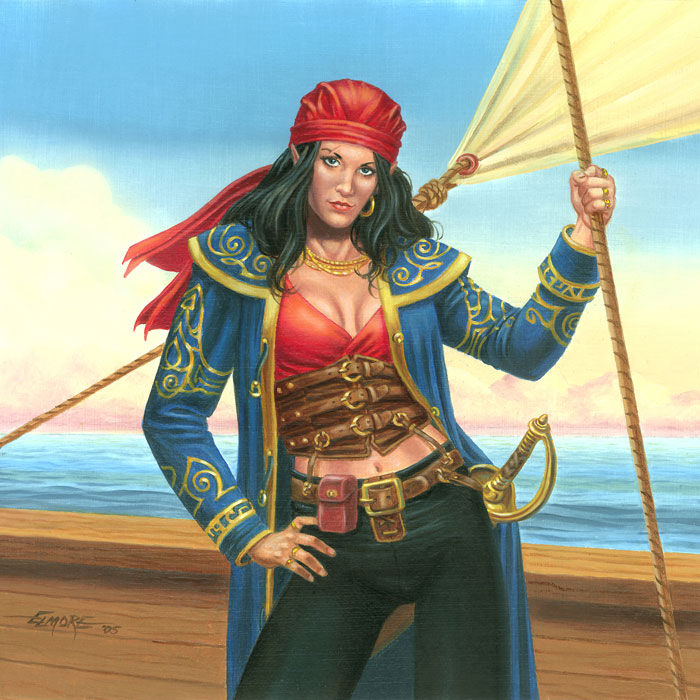
19.

18.
17.

16.

15.
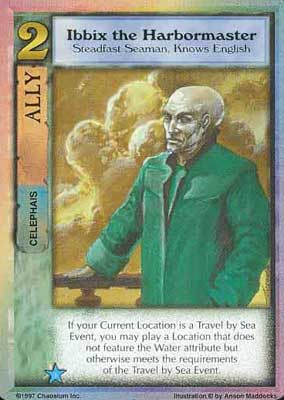
14.

13.
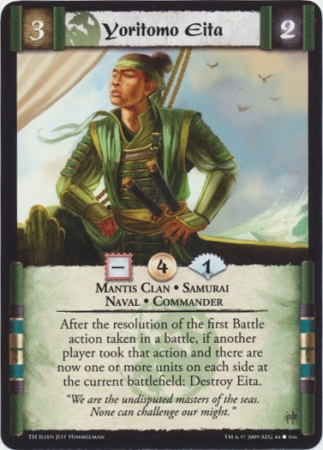
12.
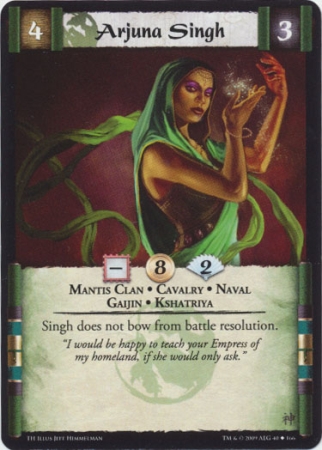
11.

10.
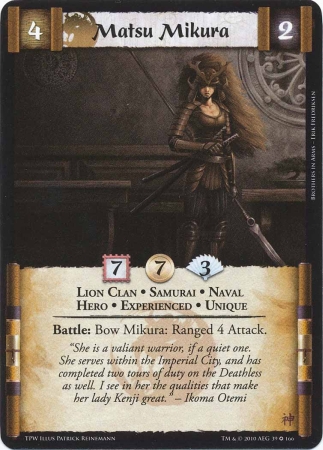
9.
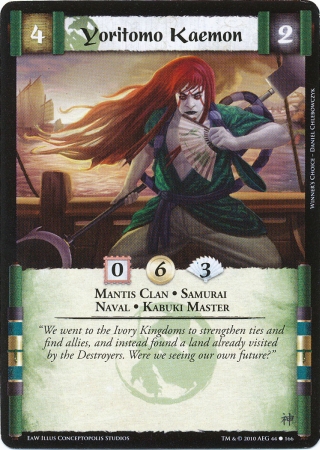
8.

7.

6.
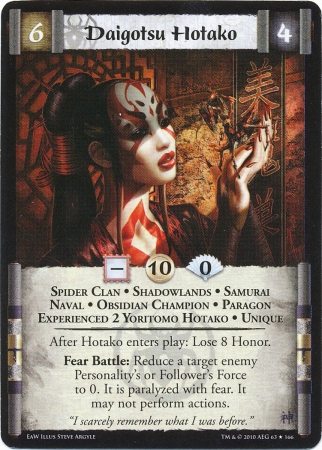
5.

4.
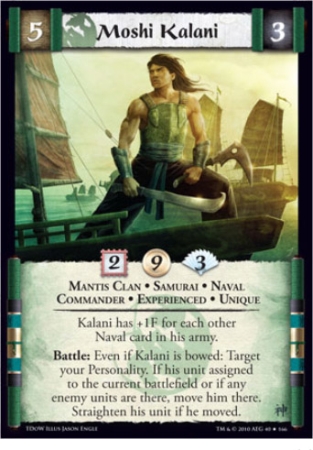
3.

2.

1.
